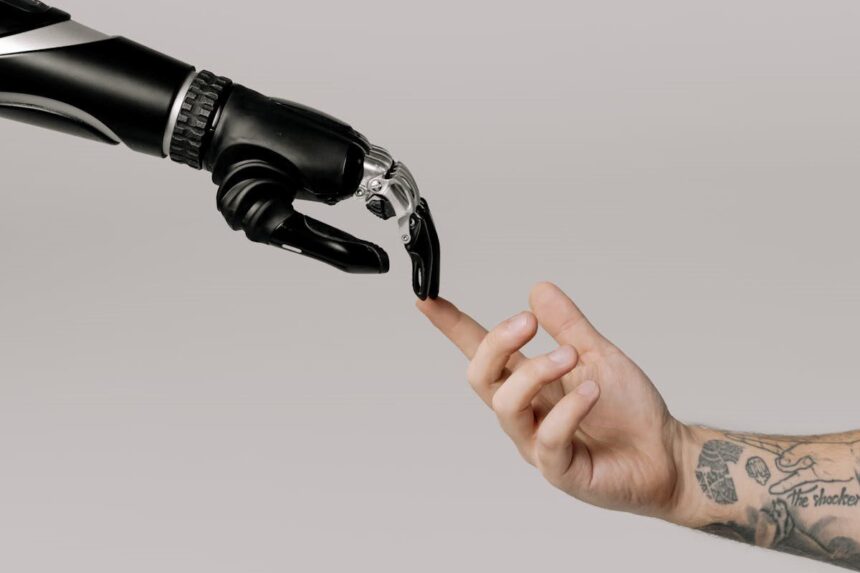Machine learning (ML) and artificial intelligence (AI) have emerged as transformative forces across various industries, revolutionizing how businesses operate, make decisions, and interact with customers. From healthcare to finance and even the gaming industry, the applications of these advanced technologies are vast and continually expanding. This article delves into the profound impact of ML and AI across several key industries, highlighting their innovative contributions and the changes they bring.
In healthcare, ML and AI are driving significant advancements in diagnosis, treatment, and patient care. These technologies enable the analysis of vast amounts of medical data, leading to more accurate and early diagnoses. For instance, AI algorithms can analyze medical images such as X-rays, MRIs, and CT scans with remarkable precision, often identifying conditions that human eyes might miss.
Moreover, AI-powered predictive analytics are being used to forecast patient outcomes, optimize treatment plans, and improve the management of chronic diseases. Personalized medicine, tailored to individual patient profiles, is becoming a reality thanks to AI’s ability to process genetic information and medical histories to recommend customized treatment options.
The gaming industry is one of the most exciting areas where ML and AI are making a significant impact. These technologies are enhancing player experiences, improving game design, and optimizing development processes.
AI algorithms analyze player behavior and preferences to create personalized gaming experiences. This includes customizing game difficulty levels, recommending in-game purchases, and tailoring content to individual players. By understanding player habits, AI helps developers create more engaging and immersive games.
One other way AI helps is by maintaining fair play in online gaming. Anti-cheat systems powered by machine learning can detect and prevent cheating by analyzing gameplay patterns and identifying suspicious activities.
This, coupled with the introduction of cryptocurrency and blockchain technology, helps assure players that their gaming outcomes are fair. These technologies have been extensively used in niche markets like online casinos, where the entire industry hinges on transparency. Entrants to crypto expert Hema’s list of crypto casinos are evidence of how powerful these technologies can be when combined, as evidenced by their popularity in the US market.
Moving away from their applications in real money online casinos and gaming generally, the financial industry is another industry that has rapidly adopted ML and AI to enhance operational efficiency, risk management, and customer service. In trading, AI algorithms analyze market trends and execute high-frequency trades faster than any human could. These algorithms can adapt to market changes in real time, making investment decisions that maximize returns and minimize risks.
In banking, AI-powered chatbots and virtual assistants are improving customer service by handling routine inquiries and transactions, allowing human staff to focus on more complex tasks. Furthermore, ML models are being used to detect fraudulent activities by analyzing transaction patterns and flagging anomalies, thereby enhancing security and protecting consumers.
Retailers are leveraging ML and AI to create personalized shopping experiences and optimize inventory management. By analyzing customer data, AI can predict purchasing behaviors and recommend products tailored to individual preferences. This personalization increases customer satisfaction and loyalty, driving sales and revenue growth.
AI-driven supply chain management systems help retailers maintain optimal inventory levels, reducing costs associated with overstocking or stockouts. Predictive analytics also enable retailers to anticipate demand trends and adjust their strategies accordingly, ensuring they can effectively meet customer needs.
In manufacturing, ML and AI are transforming production processes through automation and predictive maintenance. Smart factories equipped with AI-powered robots and sensors can monitor production lines in real time, identifying inefficiencies and optimizing operations. This leads to increased productivity, reduced downtime, and lower operational costs.
AI-enabled predictive maintenance allows manufacturers to anticipate equipment failures before they occur. By analyzing data from machinery sensors, AI can predict when maintenance is needed, preventing costly breakdowns and extending the lifespan of equipment. This proactive approach minimizes disruptions and ensures smooth production processes.
In the transportation sector, ML and AI are at the forefront of developing autonomous vehicles and improving traffic management systems. Self-driving cars powered by AI use sensors and cameras to navigate roads, avoid obstacles, and make real-time decisions. This technology promises to enhance road safety, reduce traffic congestion, and provide more efficient transportation options. It is estimated that by 2030, 25% of cars sold will be autonomous, underlying the significance of the roles AI and ML are playing and will still play.
AI is also optimizing public transportation systems by analyzing passenger data and predicting demand patterns. This enables better scheduling, route planning, and resource allocation, resulting in improved service reliability and passenger satisfaction.
Machine learning and artificial intelligence are revolutionizing industries by driving innovation, improving efficiency, and enhancing customer experiences. From healthcare and finance to retail, manufacturing, and gaming, these technologies are transforming how businesses operate and interact with their customers. As AI and ML continue to evolve, their impact will only grow, offering new possibilities and solutions to some of the most pressing challenges across various sectors.



